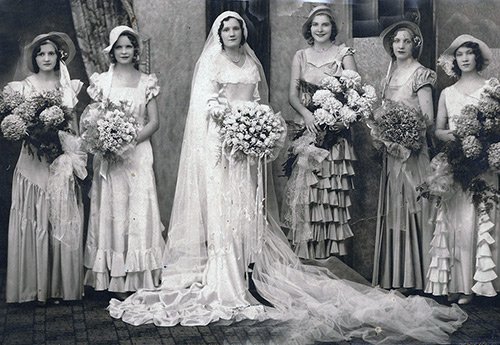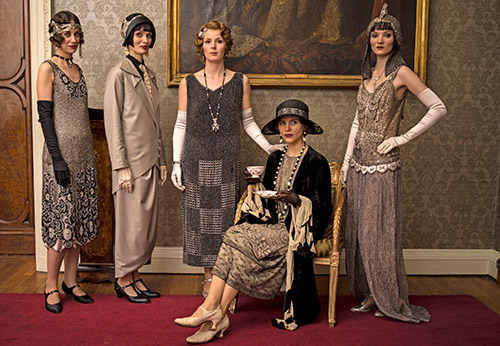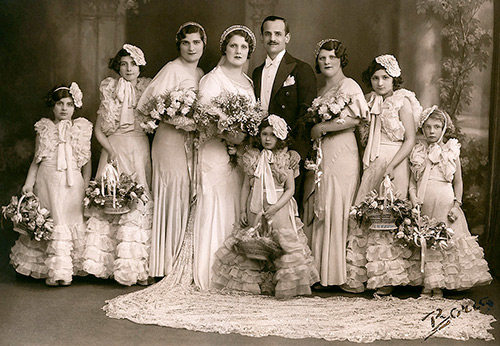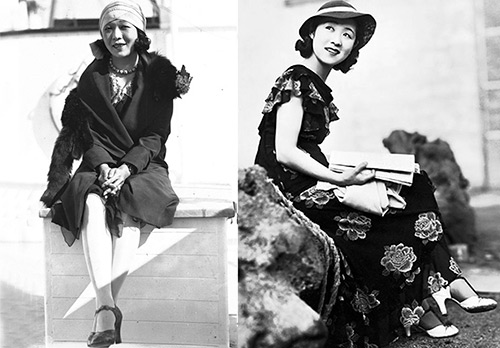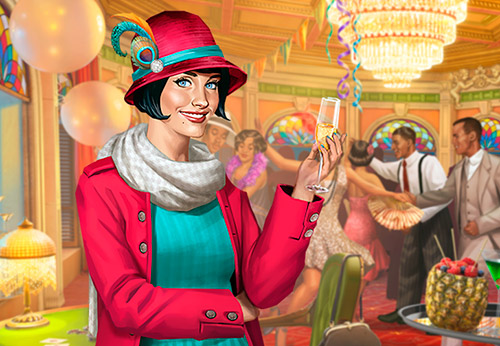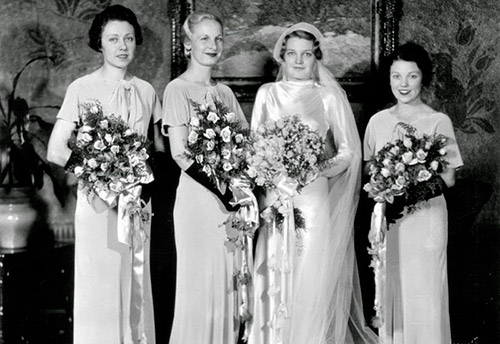Style
Fashion and style of the 20s - dresses and other fashionable clothes
In the fashion proposals of designers of the XXI century, the style of the 20s of the last century is often found and takes on new life. A simple laconic silhouette with a low waistline has returned and is returning more than once. Why is this happening?
In the early 1920s, the consequences of the war quickly began to be forgotten in Europe, which cannot be said about Russia (here not only the war left its bloody traces, but also the revolution, to which everyone was ambivalent). Be that as it may, the development of industry, transport began, economic ties were established between the countries.
People tired of tragedies, not knowing that the black streak of the great depression would soon come again, wanted to enjoy life, have fun, catch up and enjoy today. New people rise to the pedestal of luxury, wealth and power instead of the bankrupt aristocracy, which in almost every country had to be liberated or moved somewhere, so that a warm place in the sun was taken by others, dictating their way of life and needs.
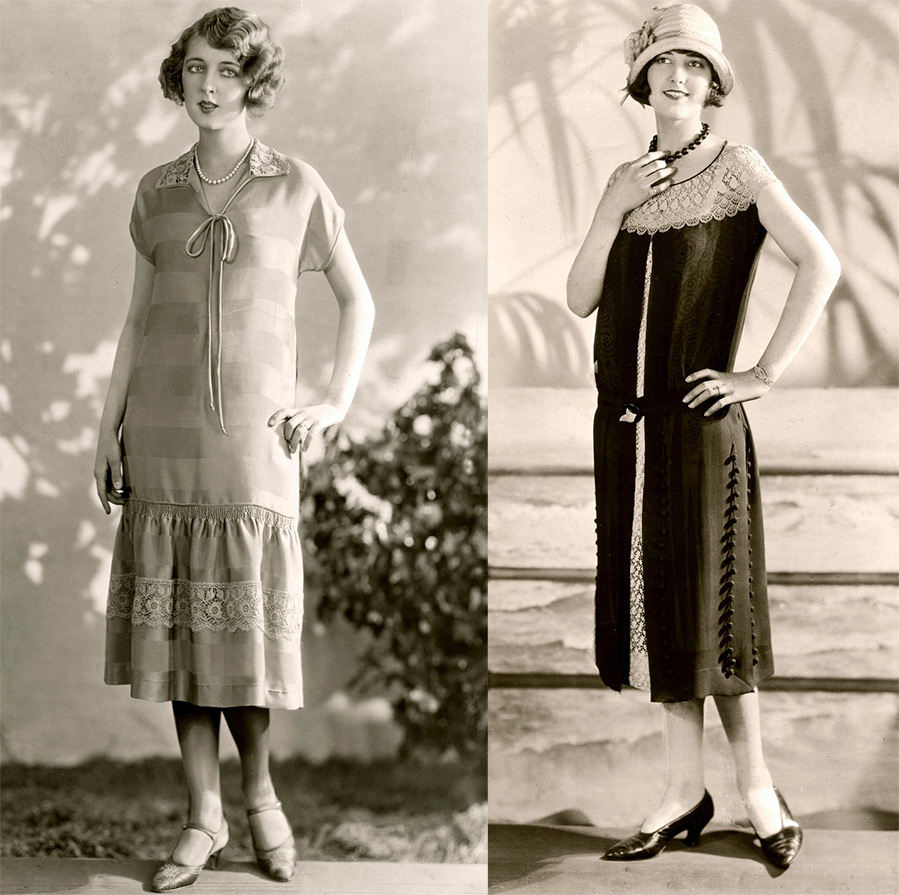
All this leads to changes in fashion and style, because fashion always feels the pulse of time, and sometimes changes occur in it, going at the same speed with the events taking place in the world. Especially striking changes are always noticeable in women's fashion. In this regard, women react faster, probably because they are prompted by female intuition.
Along with men, women of the 1920s are mastering new types of professions, doing responsible work, showing themselves in new types of leisure, and this, above all, concerns sports. In addition to skating and horse riding, which were previously available to women, cycling and tennis are being added. And also, dancing, dancing and dancing. Only these are not at all those in the huge halls where men decorously lead their ladies, admiring them and bowing to them.
Now is the time for restaurants and bars, where the audience gathers in the evenings - men and women, the rhythmic music of Charleston sounds, and the cuties in short dresses dance until they drop. The new ideal is a woman-boy with a short haircut, a slender, slender "plank woman".
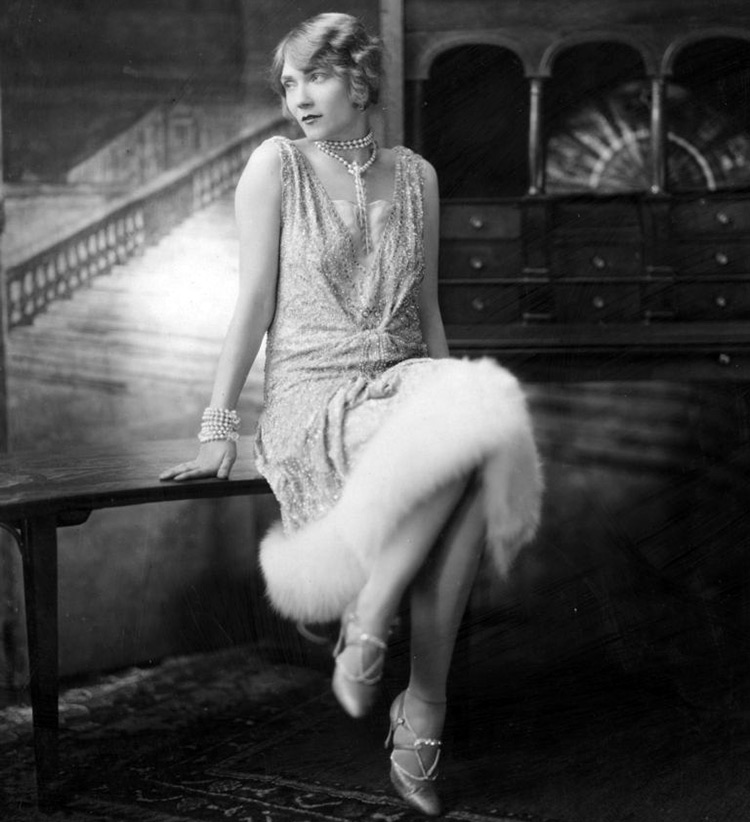
Clothes have become simpler, but much more functional. Silent cinema has become a real passion. Everything was found in it, it made it easier to choose, live, think. The era of jazz began, foxtrot, slowfox, shimmy appeared. Tango, formerly an obscene dance, has been allowed into the most dignified homes. A gramophone appeared. Dancing reached its climax, everyone danced, at any time of the day. And the new clothes were in harmony with the fast rhythms of the dance. Daily dancing has erased the boundaries between casual and festive attire. Sunday walks out of town also required new clothes.
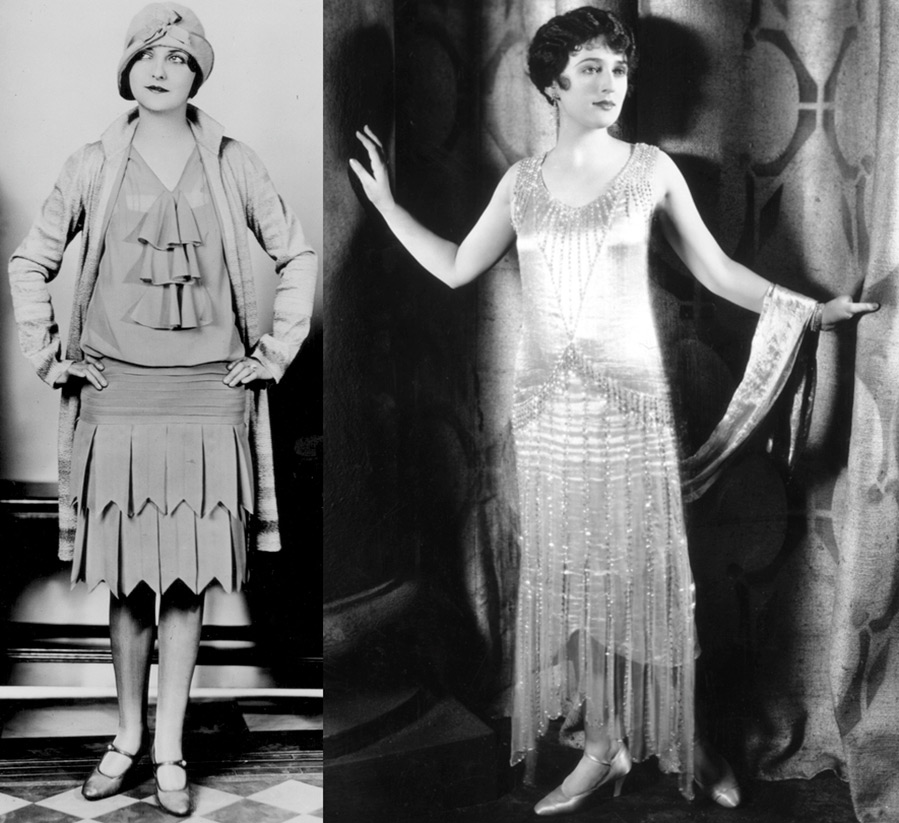
1920s fashion silhouettes
The silhouette of the 20s is straight, slightly elongated, with a low waistline. This silhouette was for almost all types of clothing. The simplicity of the silhouette forced fashion designers to come up with the most fancy decorative elements for their models to decorate the outfit. Perhaps due to a sophisticated fantasy in the field of decoration, the style of the 20s has always deserved attention and has been repeated many times. In addition to the unique decor, the simple silhouette of the lady enlivened the complex cut of the outfits - undercuts, cuts and other designers' fantasies.
Dresses and style of the 20s
The most popular type of clothing in the 1920s was dresses. Structural details, which gave originality to the skirts, became a special accent in the models. The skirts were double-layered and multi-tiered, with cuts and button closures, with pleats and pleats, with intricate draperies and flounces. The bodice, in contrast to the skirt, was quite simple, often with a deep neckline. Long scarves, bows and other elongated ties-ribbons served as decoration here.
Sleeve - set-in or "Japanese", dresses were often sleeveless or on thin straps (shirt dresses). All the simplicity of the bodice was complemented by the beauty of jewelry or costume jewelry. The parade of jewelry and decor was headed by beads and fringes. Long string of beads was the ultimate perfection of a woman-boy.
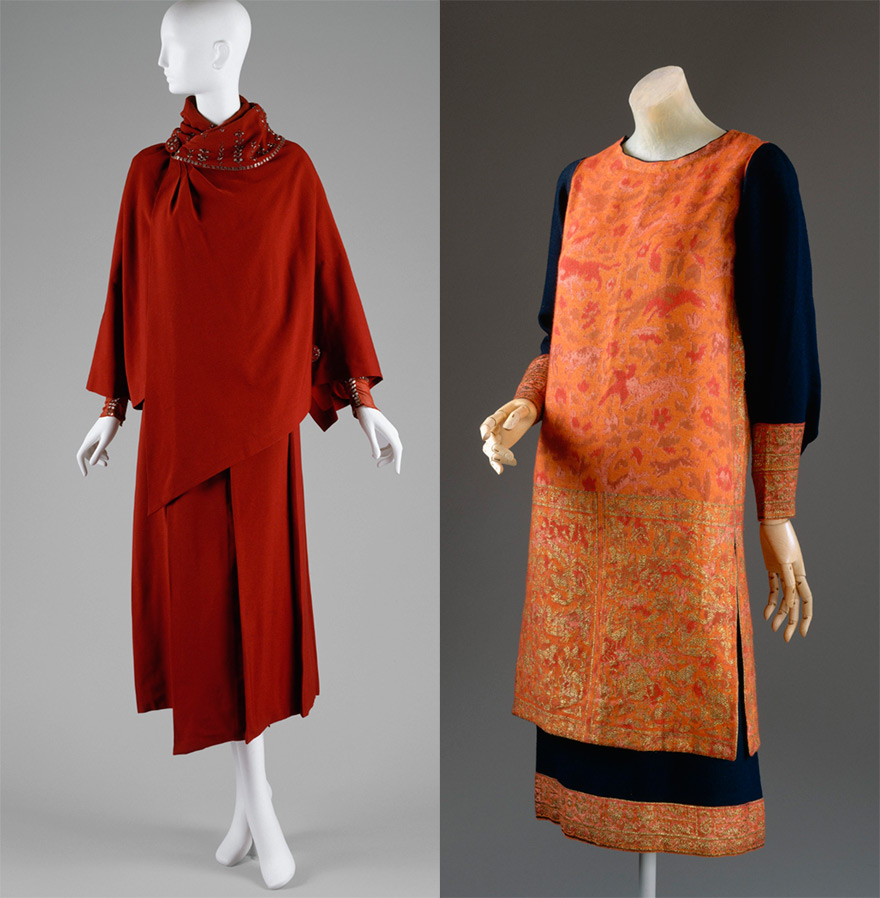
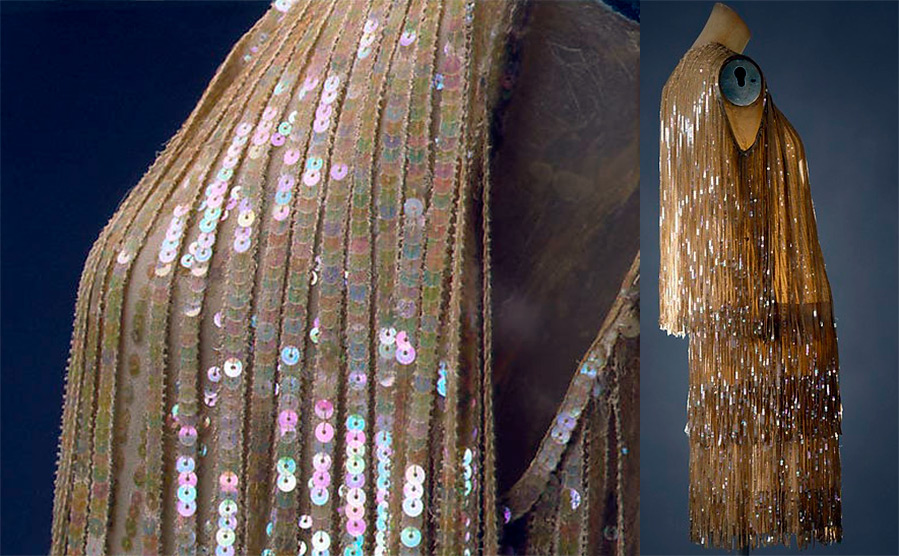
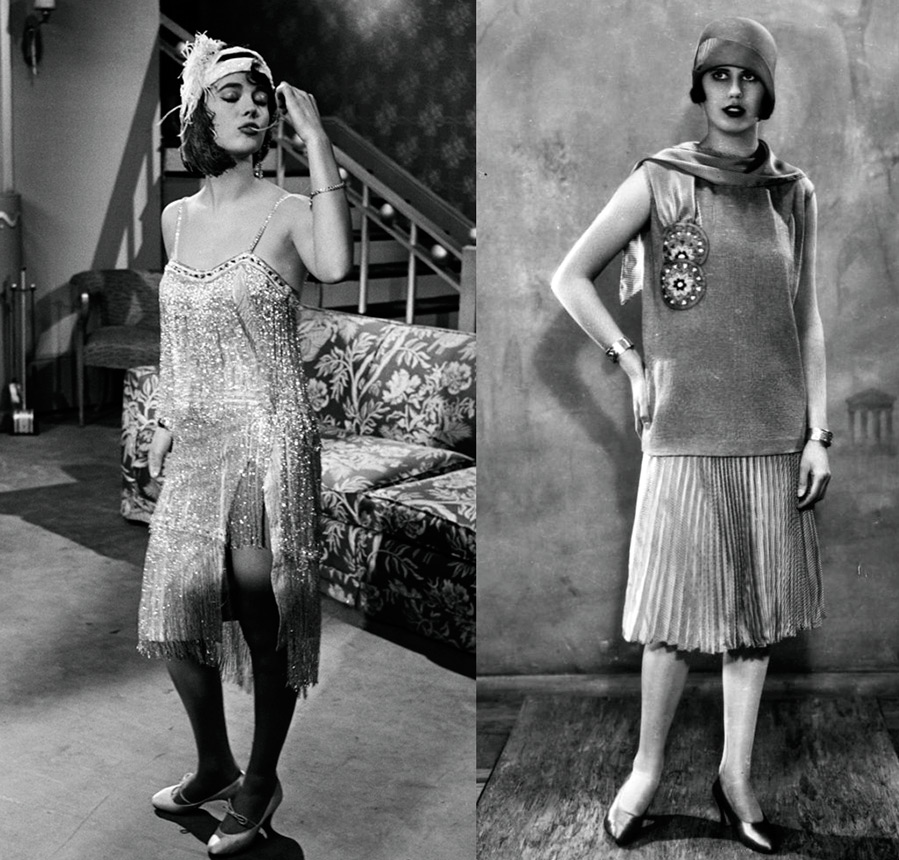
Dresses of the 20s differed in a rather laconic silhouette, therefore, the designers of the 20s sought to make them attractive, using a variety of decor and a combination of unusual fabrics. Elegant dresses of the 1920s are characterized by the same simple and laconic silhouette as for everyday dresses, and therefore it was these outfits that were supposed to shine with an abundance of decor and beautiful fabrics.
The most common models of the evening version were with lace. Thrived relatively recently before the 20s modern era... Therefore, in the memory of both wearers of outfits and fashion designers there were still those models decorated with embroidery and lace, especially models of the first and second periods - from 1890 to 1900.
And not only the Art Nouveau style could boast of lace trimmings, at all times lace was held in special esteem, unless only in the 60s of the twentieth century for a short period, as it were, they did not remember about it. In the 1920s, lace was used to decorate the edge of the product, on its individual parts, and even there were completely lace skirts, jacket and sleeve shelves.
Embroidery flourished at the time... Craftsmen of the 1920s used expensive fabrics decorated with coupon embroidery for evening dresses. In particular, the designers had hand-embroidered clothes - voluminous appliqués, cutwork embroidery, exquisite lace products. Among the various types of embroidery were original compositions made of cord, braid and plait. In the same years, beadwork became the most widespread. The outfits in which beads were combined with silk thread were especially good.
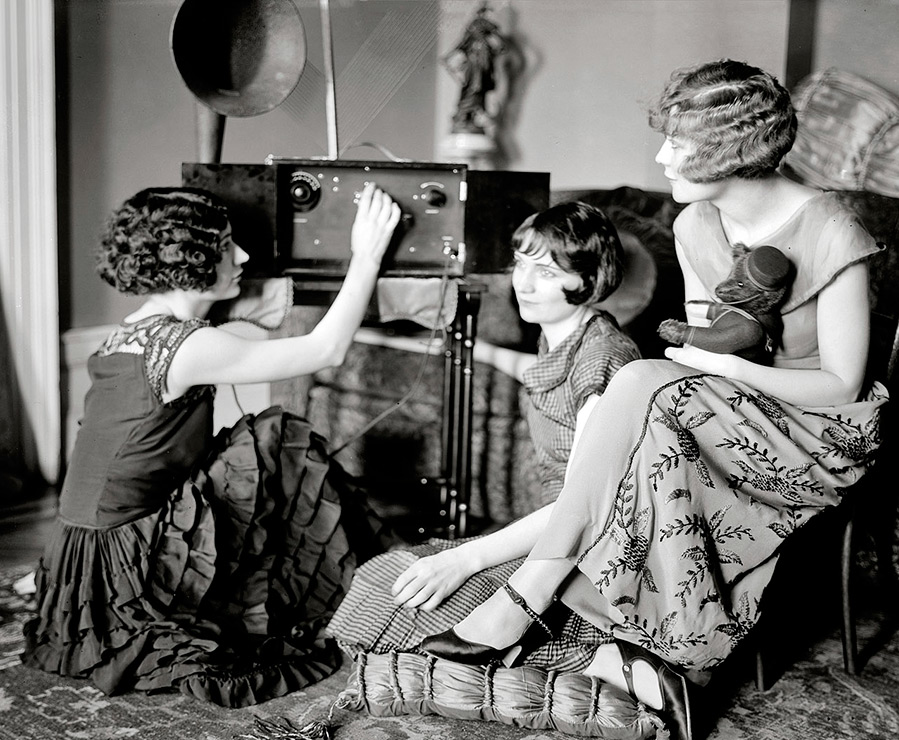
Fringed outfits were not inferior in their luxury. Fringe was loved, in the wardrobe of every self-respecting fashionista there was always an outfit, and sometimes more than one, with a fringe. The lively, refined character of the fringe, swaying to the beat of the woman's movements, was an expressive element of clothing that not only adorned the fashionista, but also knew how to say a lot instead of her words. The fringe was made of thick silk or beaded threads.
The designs of the fabrics also contained numerous elements of the Art Nouveau style. The fabrics were printed and monochrome, matte and shiny, with an unusual textured surface. Translucent outfits were decorated with fur or feathers, sometimes the edges were made of chiffon. The wealth of fabrics was used by fashion designers in sophisticated outfits. They mastered complex technological techniques.
In the 1920s, designers boldly considered combinations of different fabrics. Evening dresses were especially chic. Folds, frills, ruffles, flounces, draperies, feathers, fringes, beads, rhinestones and ... diamonds reigned here. Evening sheath dresses became popular in the late 1920s. Usually they were sewn from heavy and stiff fabric, but there were also lighter options - from lace or brocade with a metallic sheen.
In the late 20s, from hard fabrics such as taffeta, hard moire, waxed satin, they built amazing models, which are something fantastic, with sharp angles and asymmetry, which seemed to be the fruit of a futuristic-cubist influence. But along with such bulky models, there were also models that are the embodiment of femininity.
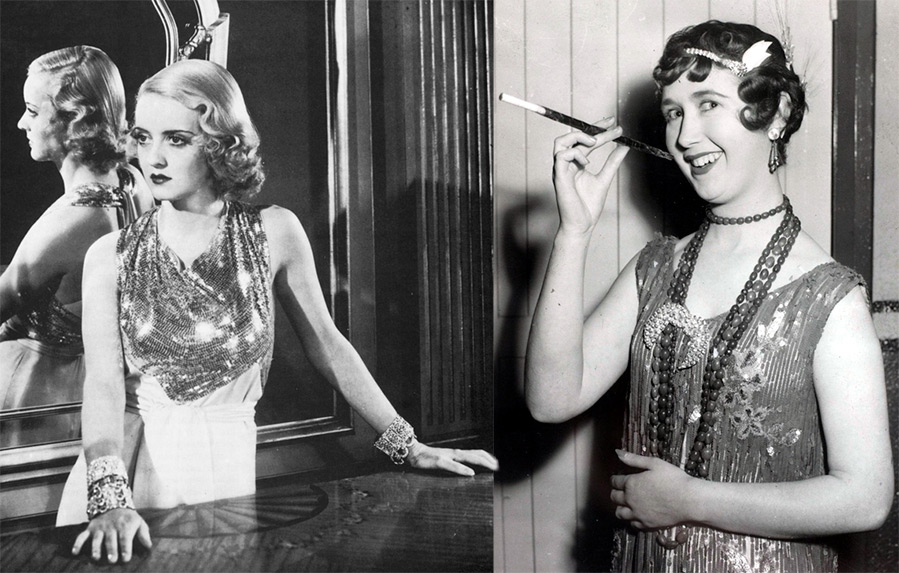
1920s fashion costumes
In addition to dresses, in the 1920s, a lot of attention was paid to business clothes, because many women started working. In this regard, costumes were most often used. Creating this type of clothing, fashion designers of that time focused primarily on the classic "English" costume. Already in 1914, clothes resembling a man's suit appeared in the women's wardrobe.
The look of the women's costume of the 20s had a strict character with feminine elements. For example, the shelves of the jacket had a low position of the fastener or were without it at all.In the form of collars and lapels, the line of the side and other elements of the cut, the designers of the 20s adhered to clarity and refinement. In the 1920s, not only formal suits appeared, but also separate jackets, which were offered as an addition to skirts or dresses. Such jackets could be worn not only with dresses made of dense fabric, but also with dresses made of chiffon.
20s sportswear and style
Blouses and skirts prevailed in sportswear. Sports-style blouses also had a low waist, the sleeves were long, straight with narrow cuffs that were fastened in the same way as in a men's shirt.
Skirts are most often with deep pleats or shallow pleats. Dresses were also popular in sportswear. Woolen dresses were decorated with a light collar and a long ribbon tied at the neck. Summer white dresses, which were complemented by vests or jackets, were extremely popular.
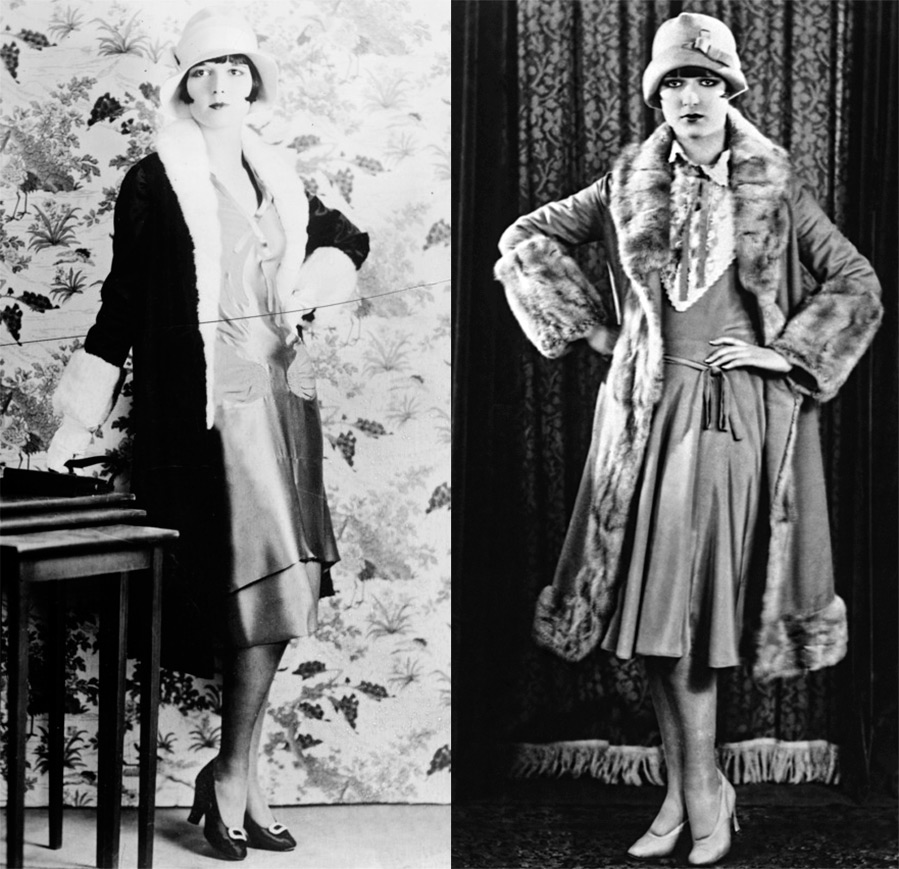
Coats and 20s Fashion
Straight coat silhouettes in the style of the 20s were performed with asymmetric fasteners, there were options with one fastener or a wrap coat. In the 1920s, the coat was sometimes shorter than the dress, then this coat was called a trocar (3/4 coat). For a coat at that time, a checkered print was often chosen - "window sash" cells, "tartan" of medium size.
In the models of the 20s, you could see trimming with leopard fur. Raincoats became common, which were comfortable for driving or for rail travel. There were even evening cloaks, slightly widened at the bottom and trimmed with polar fox fur. In the late 1920s, capes became popular. They also had a simple cut, they were sometimes worn instead of a raincoat or in an ensemble with a suit. Capes sometimes replaced the sleeves in a cloak or were simply sewn over the sleeves.
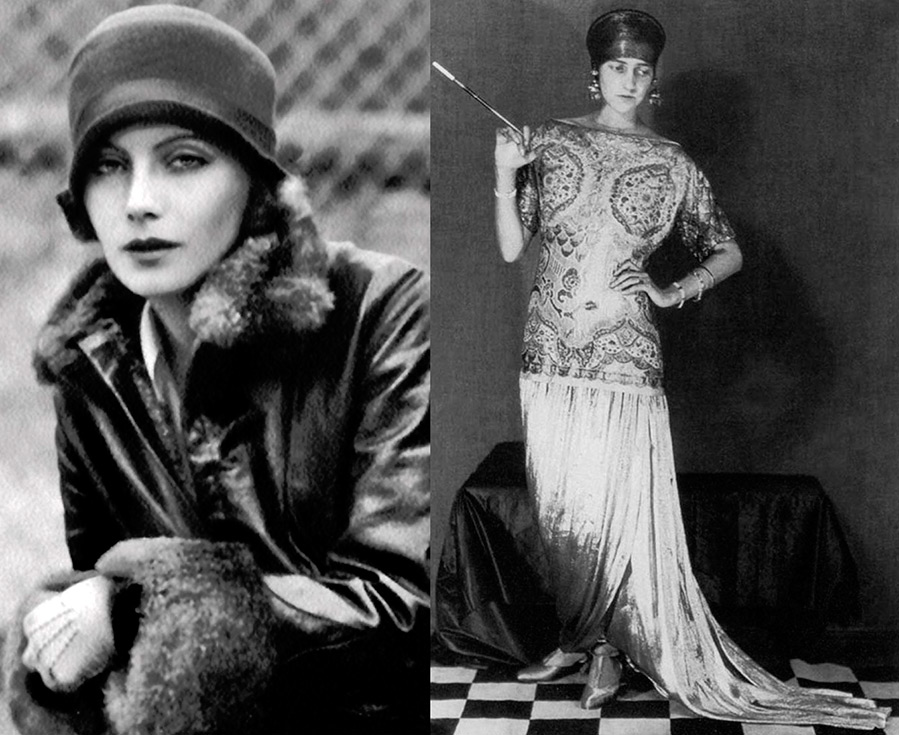
The coat was decorated with fur... Rabbit or hare fur was especially popular. These furs are among the cheapest and most easily processed. A fur coat was made with fur on the seamy side, and the cuffs, collar and hem along the bottom were decorated with more expensive long-piled fur. Luxury fur coats were reversible. At this time, depending on financial wealth, fur coats were worn, combined from different kinds of furs. Original combinations were often created.
The length of the outfits was getting shorter, in 1928 the knees were even slightly open. The waistline in 1924 was very low, reaching almost to the hip line. Over time, the waist rose, and already in 1929 it almost reached its rightful place.
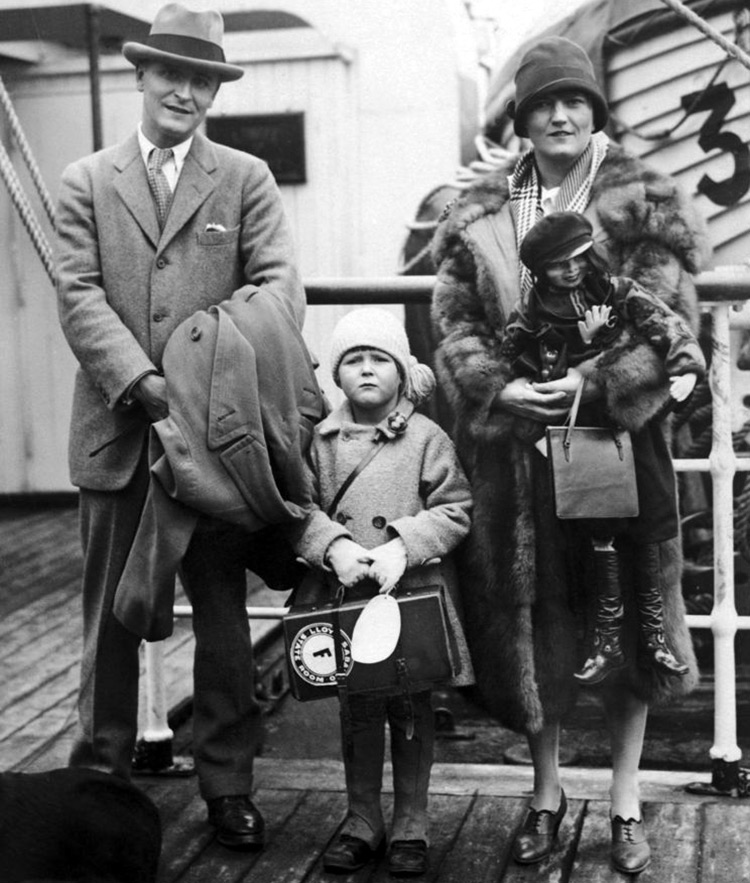
The fashion for hats in the 1920s
Short hair, bangs, small strands that slightly covered the ears, or long curly paysikami created a small head that required a small hat. The hat has become tight, well-fitting the head. At first, the hat looked like a bucket or a pot; feathers, flowers, ribbons often served as decoration.
In addition to the shape of a bucket, hats with a round head, similar to a bowler hat or a military helmet, appeared. Such hats adorned women's heads everywhere. On the beach, they wore hats with large brims, at home they tied their heads with large silk scarves, it was very beautiful. It has become fashionable to wear long velvet or ribbons on hats. Long, straight scarves are new.
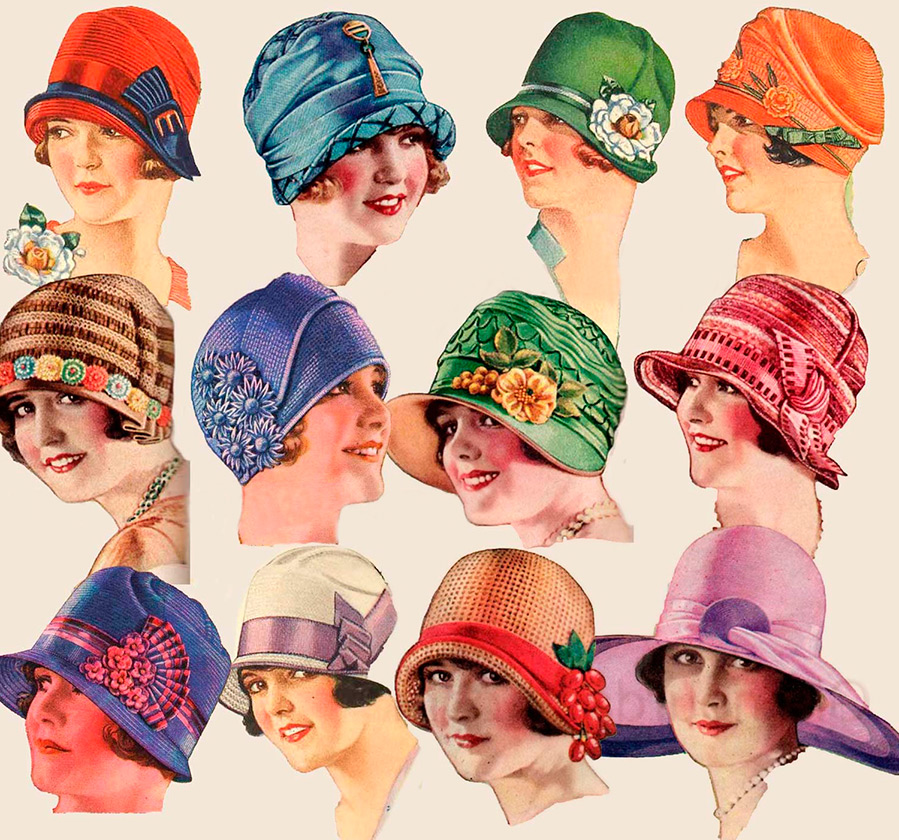
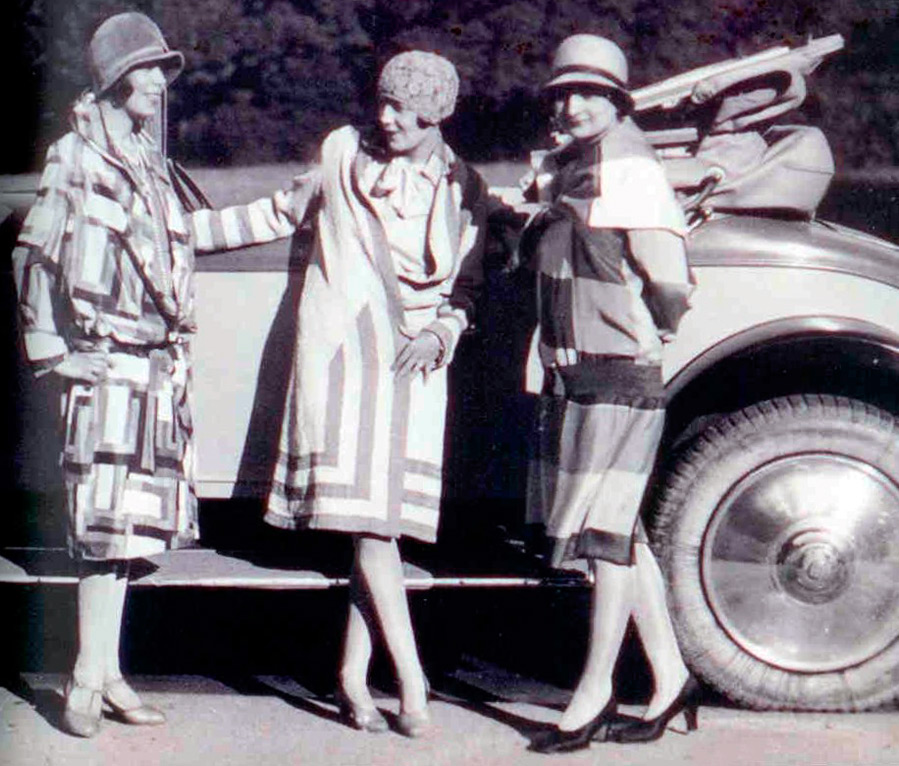
20s fashion and lingerie
In the 1920s, night pajamas finally took root. The silk linen had beautiful vibrant colors. Especially fashionable in 1920s lingerie was the honey color. Lingerie was trimmed with lace, tulle, silk, etc. The laces had contrasting colors: black, dark cream, cocoa. In the embroidery of linen, geometric patterns were present, they loved small hand-made embroideries in the color of the fabric, made in silk, they often used hemstitching.
Fashionable and stylish accessories from the 20s
1. White collars, long colored ties, long-piled fur boa, usually draped over one shoulder. An indispensable accessory for a self-respecting lady for an evening dress was a fan made of lace or feathers.
2. Small bags for an evening ensemble and sports bags in large sizes. Summer bags were made from colored straw.
3. Umbrellas were rarely worn, because there was a fashion for tanned skin.
4. Scarves and shawls were popular additions to clothing, the beauty of which could overshadow an elegant dress. The fringe could reach half a meter in size.
5. Stockings were worn shiny made of artificial or natural silk, more often they were sand, pink, sometimes ash-colored stockings. Dark and black stockings disappeared, only at the end of the decade did stockings with a deeper color appear. Winter stockings were made from cotton and wool.
6. Gloves with cuffs were considered the most fashionable gloves. They were decorated with embroidery, painting, inlay, lace, pleating.
7. Long strands of pearls, bracelets, similar to ancient, large clip-on earrings are extremely popular as jewelry. And even in the 20s, they began to wear a watch on their wrist.
20s style and women's shoes
The shoes of the 1920s were designed for dancing, they did not have deep cutouts so as not to fly off their feet, some models on the instep were fastened with a button, the heel was of medium height. Only the most elegant shoes had high heels. Multicolor shoes were popular. Summer shoes - flat sandals with thick soles or smooth leather shoes. Low shoes were worn as sports shoes, and evening shoes were satin with buckles and rhinestones, hand-painted. In winter, rubber boots were worn on the shoes.
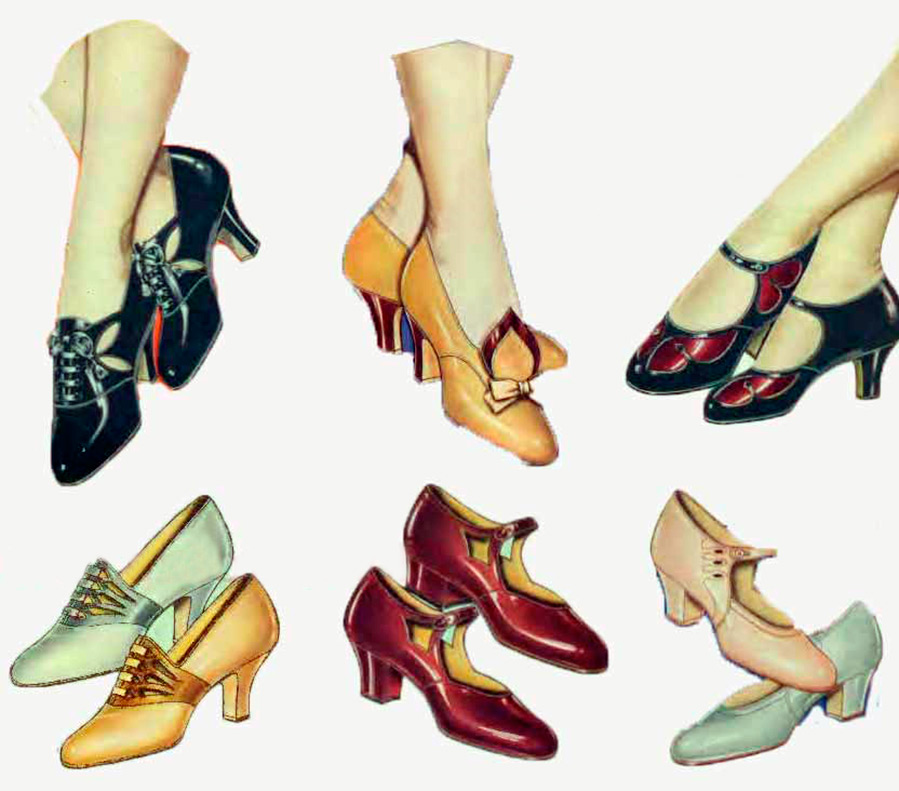
New fashion has created the opportunity for every woman to look young. Short hair significantly reduced age. Paul Poiret faded into the background. The luxury of his outfits was contrary to fashion trends. One of the best fashion designers of that time was Chanel. She introduced simplicity and breathed youth into fashion.
And so, we found out that it was the decor and original finds in the field of cutting that were the main attractive ideas of the style of the 20s. It is these ideas that remain a source of inspiration for today's designers.
In the 1920s, they tried to exclude the concept of age, everyone was young, at least they wanted to be or seem to be.... These "crazy" years, which flew by very quickly, preserved the splendor of the privileged youth, for whom this short time became an endless party. And for the bulk of people, as well as for some countries in general, this time was a period of political turmoil, inflation, unemployment. But it’s over. The "golden 20s" also ended at the very end of October 1929 - the rich became poor, and the poor even poorer.
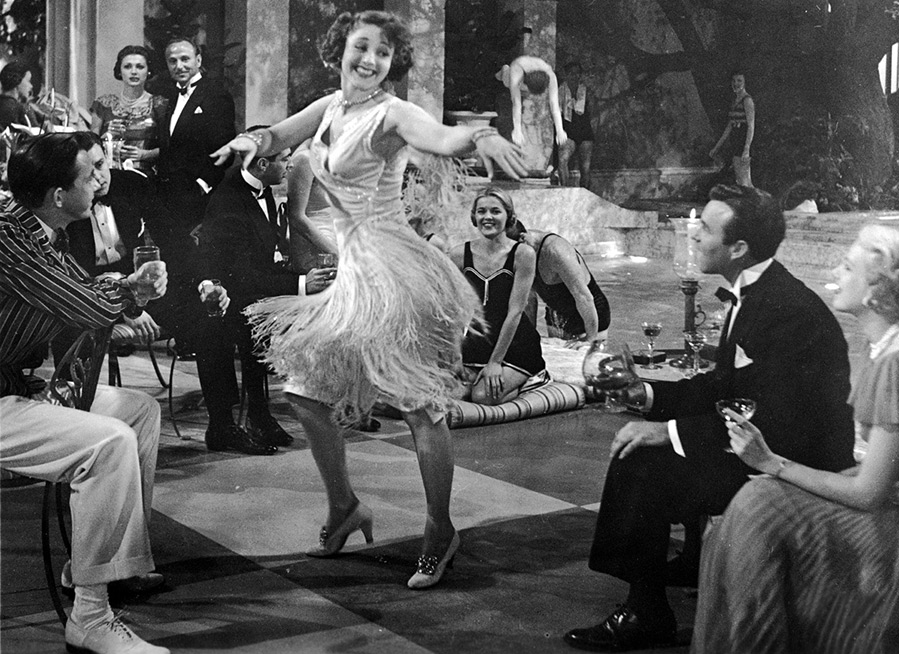
Comments and Reviews
Add a comment
Rating news
Shades of clothing that make women look younger
What shades of hair make women younger: rules and photos
Funny wedding dresses - photos and ideas
12 most expensive down jackets for the winter
How to look 25 at 40: tips from supermodels
Beautiful schoolgirls
Anti-aging haircuts and hairstyles for women
Fashionable skirts for autumn and winter
Fashionable women's trousers for the cold season
Fashionable and stylish sandals for summer 2024
Spring-summer 2024
 Fashionable dresses and tops with thin spaghetti straps
Fashionable dresses and tops with thin spaghetti straps
 Bandana tops: how to wear stylishly and beautifully
Bandana tops: how to wear stylishly and beautifully
 How to put together the perfect men's wardrobe for the summer
How to put together the perfect men's wardrobe for the summer
 Fashionable shorts for spring-summer 2024
Fashionable shorts for spring-summer 2024
 Fashionable skirts for spring-summer 2024: a guide to online shopping
Fashionable skirts for spring-summer 2024: a guide to online shopping
 The most fashionable dresses spring-summer 2024: styles and colors
The most fashionable dresses spring-summer 2024: styles and colors
 Fashionable total look 2024: image ideas and trends
Fashionable total look 2024: image ideas and trends
